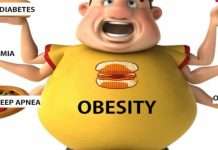Enterotoxins are poisonous substances which are produced by some pathogenic bacteria such as Vibrio cholera the causative organism of cholera; by enterotoxigenic strains of Escherichia coli just to mention a few. Enterotoxins are of 2 types the traditional enterotoxins and the cytotoxins. The traditional enterotoxins are either heat labile or heat stable and are represented by those produced by Vibrio cholerae and Enterotoxigenic Escherichia coli (ETEC). They act on enterocytes without causing any change in mucosal histology.
Patients with cholera, an intestinal infection by Vibro cholerae usually experience voluminous life threatening intestinal electrolyte and fluid secretion. When ingested, V. cholerae can cause diarrhea and vomiting in a host within several hours to 2–3 days of ingestion. During infection, V. cholerae secretes the cholera toxin called Choleragen, a protein that activates some biochemical processes which leads to gross NaCl secretions. As a result dehydration ensues, with symptoms and signs such as thirst, dry mucous membranes, decreased skin turgor, sunken eyes, and hypotension, weak or absent radial pulse, tachycardia, tachypnea, hoarse voice, oliguria, cramps, renal failure, seizures, somnolence, coma, and death. Death due to dehydration can occur in a few hours to days in untreated children.
However, there are other bacterials that cause toxigenic diarrhoeas such as Yersinia enterocolitica, Bacillus cereus, Aeromonas hydrophiliae, Clostridium perfringens, Clostridium difficile, Staphylococcus aureus among others. E. coli which causes travellers diarrhoeas that can be serious in infants produces a heat stable toxin that is functionally similar to heat liable cholera toxin which binds to guanylate cyclase C resulting to increased cGMP levels which stimulates Choride ions secretion and inhibits NaCl reabsorption. Oral rehydration solution (ORS) or electrolyte replacement therapy is the most common choice for treatment. Commercial (Pedialyte and others) or homemade preparations can be used. The World Health Organization (WHO) has provided this easy recipe for home preparation, which can be taken in small frequent sips:
- Table salt—3/4 tsp
- Baking powder—1 tsp
- Orange juice—1 c
- Water—1 qt (1l)
The presence of glucose in the orange juice allows uptake of sodium ions to replenish the body’s NaCl. The composition of sport drinks for electrolyte replacement is based on the same principle, namely, more rapid sodium absorption in the presence of glucose.
References:
- http://www.unilorin.edu.ng/inaugural-lectures/OF-BACTERIAL-PATHOGENS-AND-DIARRHOEA.pdf
- http://medical-dictionary.thefreedictionary.com/toxigenic+diarrhea
- Carpenter, C. C., J. S. Fordtran, and S.G. Schultz (1980) “Secretary Diarrhoea” American Physiology Society. p. 67











